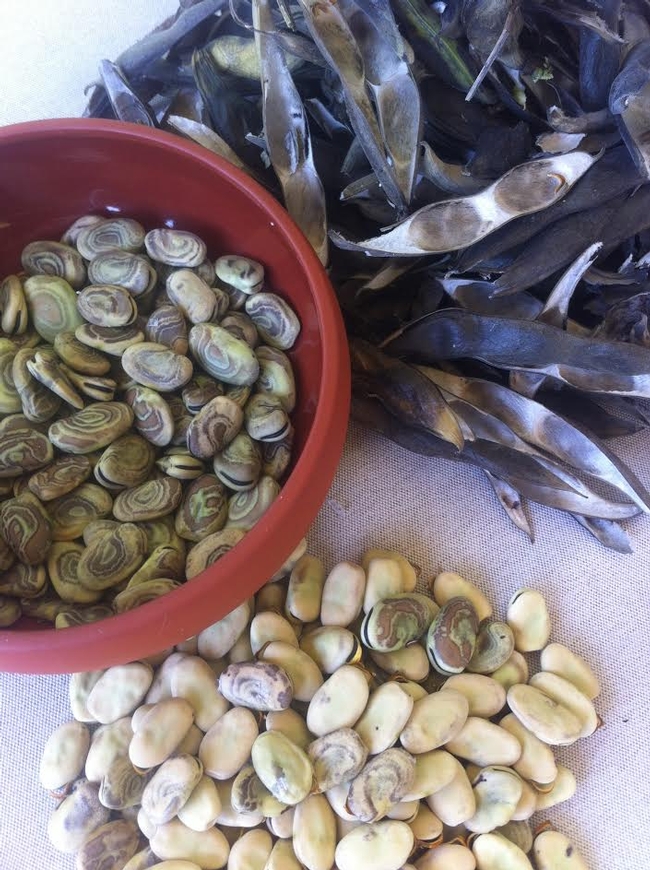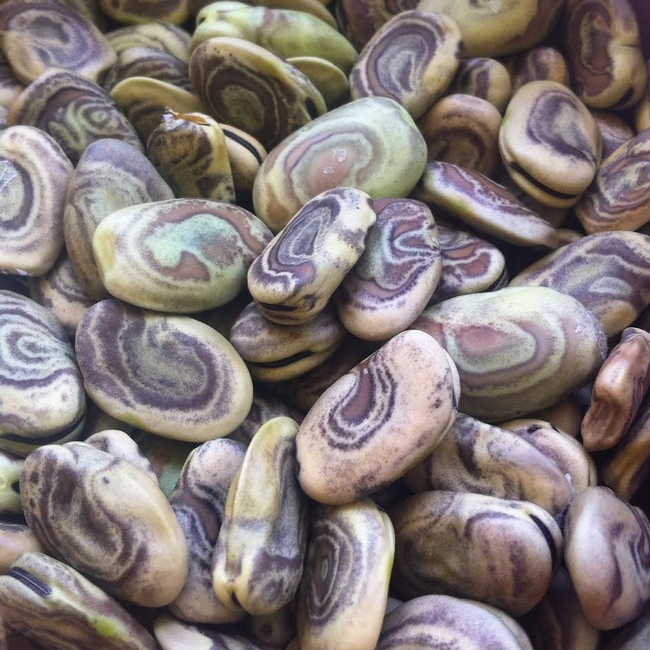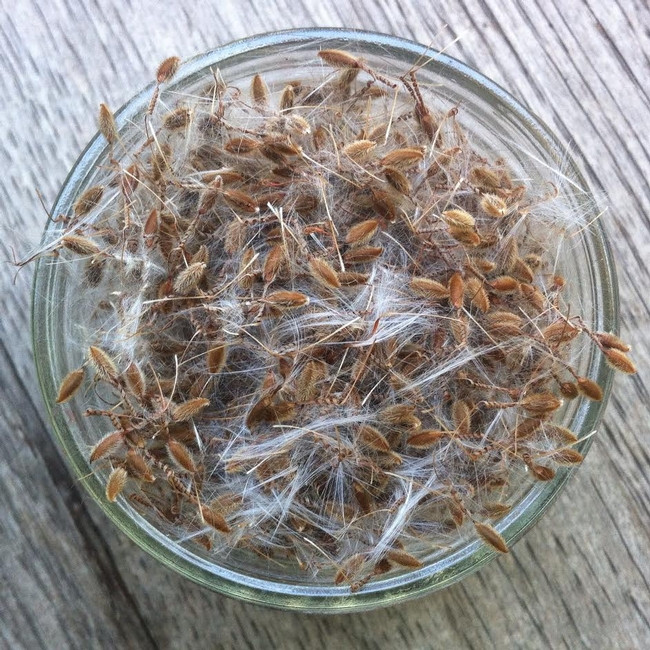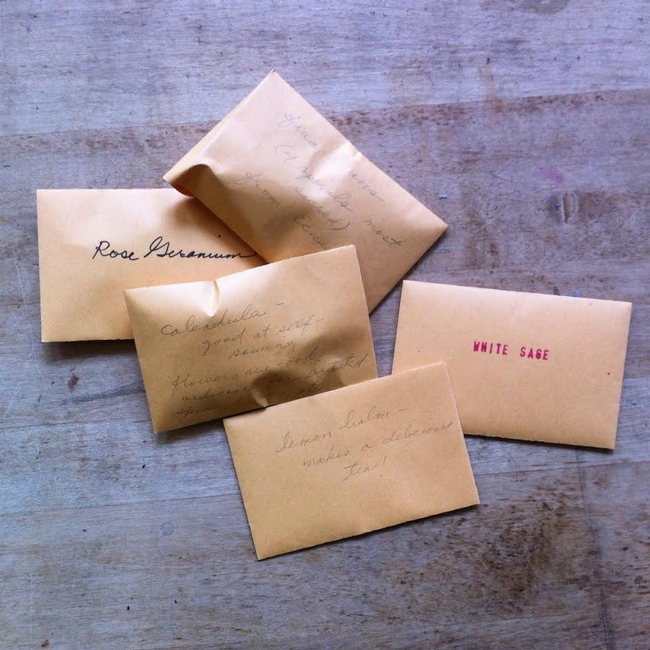A Daily Practice
Separating fava beans from their seedpods. Photo © Melody Overstreet.
A Precious Gift
Two years ago, we received 10 fava beans from our dear friends. The seeds originated from the Sacred Valley region of Peru where they were hand-selected for a distinct spiral pattern on the seed coat. Starting with just a few seeds, we decided to grow this plant out in our urban garden in Midtown Santa Cruz. After successful plantings, I gently gathered these the dried pods of the newly formed fava beans.
Here is a close-up of the seeds I saved. The pattern reminds me of finger prints or various topographic layers across a landscape. Photo © Melody Overstreet.
Selecting Seed Adapted to Our Bioregion
The spicy mustard greens that generously fed us over the late winter and spring season have also since gone to seed. I harvested the seed heads and set them to dry on a large repurposed bed sheet. When fully dry, I will gently stomp on these seedpods, and sift them through fine screens to separate the seed from the chaff. The plants that did particularly well in our bioregion are the ones that we save. Over time, seed that is hand-selected in a place can become well adapted to the environmental conditions of that specific location. There are many features to save seed for, including taste, size, texture, color, drought resistance, disease resistance and overall health.
How I Save my Seeds
Newly gathered rose geranium seeds -- a delight to harvest, as the whole plant smells akin to rose! Photo © Melody Overstreet.
When dry and ready, you can begin storing your seed. Seed is well kept in a glass jar. Be sure to label each jar with the name of the plant, the date in which you collected the seed, and the location the seed was collected from. Keep in mind that seeds are living! It is best to store your seeds in a cool, dry, dark/shady space away from sunlight.
Final Thoughts...
Seeds saved in paper envelopes to share with others. Photo © Melody Overstreet.
Have you inherited any seeds with an interesting story? What is blooming or going to seed in your garden at this time? To read more about saving vegetables seeds, check out this blog post.
Don't forget to subscribe to our blog so that you receive an email notification when a new post goes up. If you have questions, contact us online, by phone or in person to get answers to your gardening quandaries!
Posted on
Wednesday, July 5, 2017 at
3:00 PM



